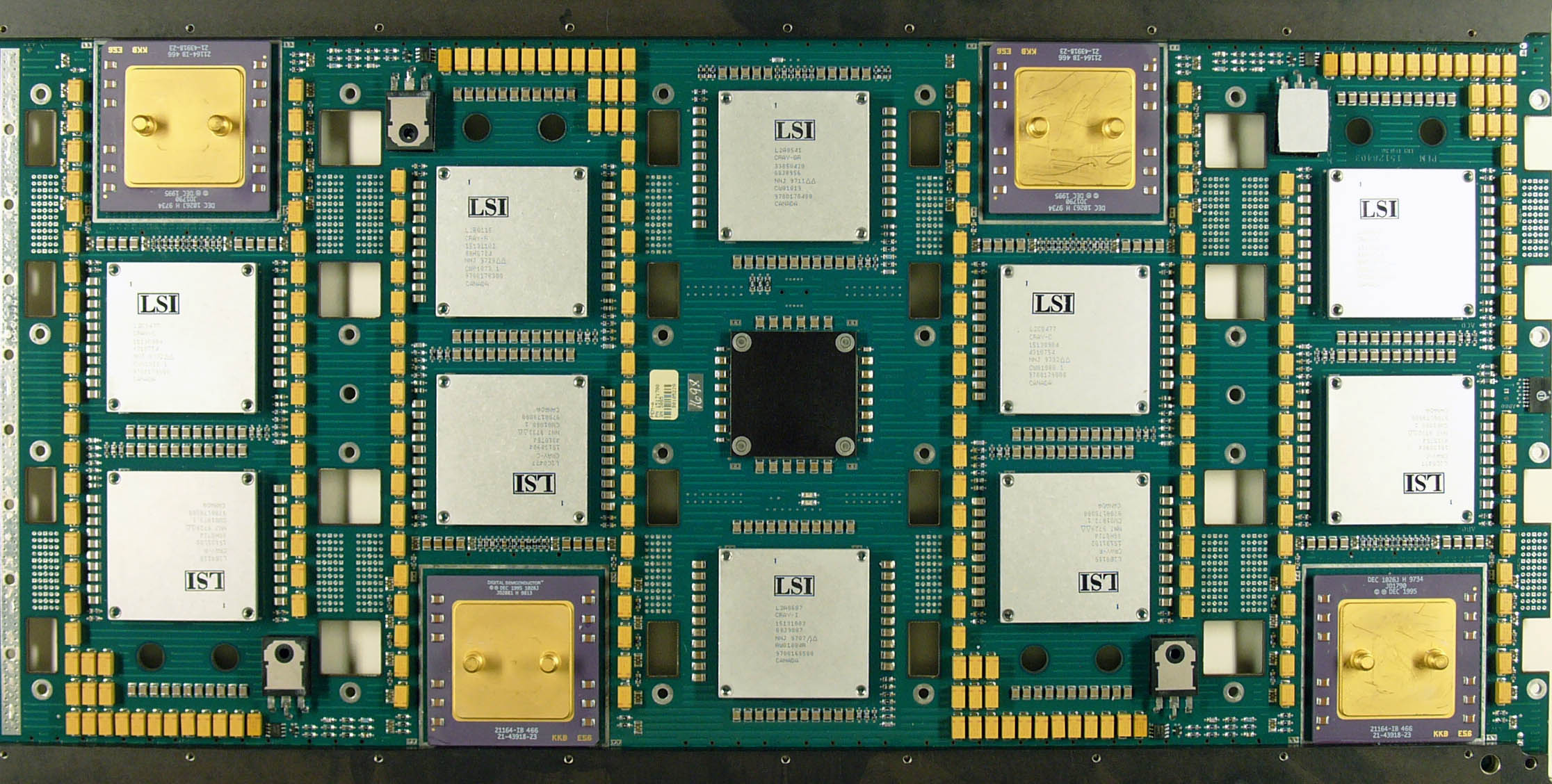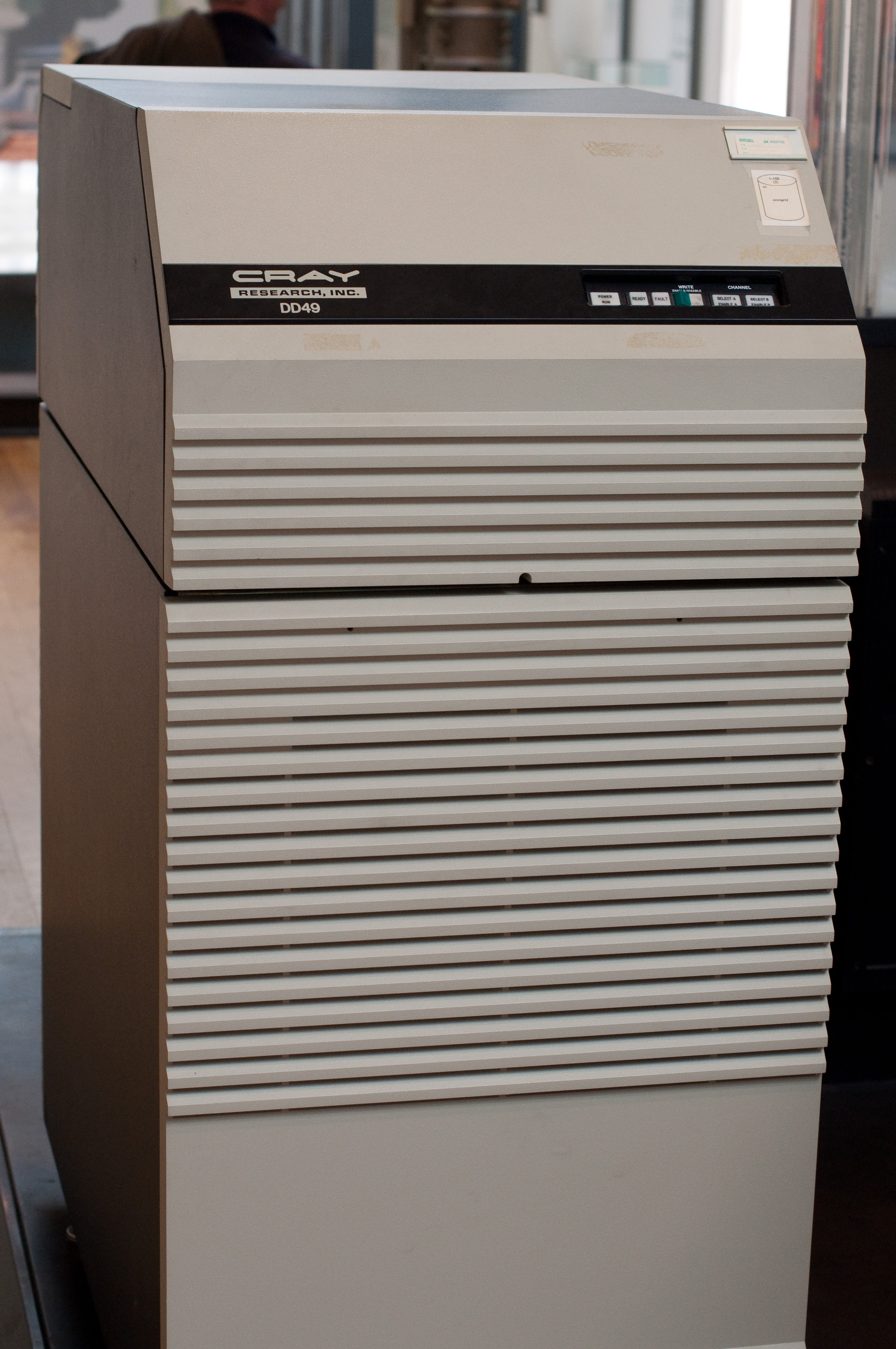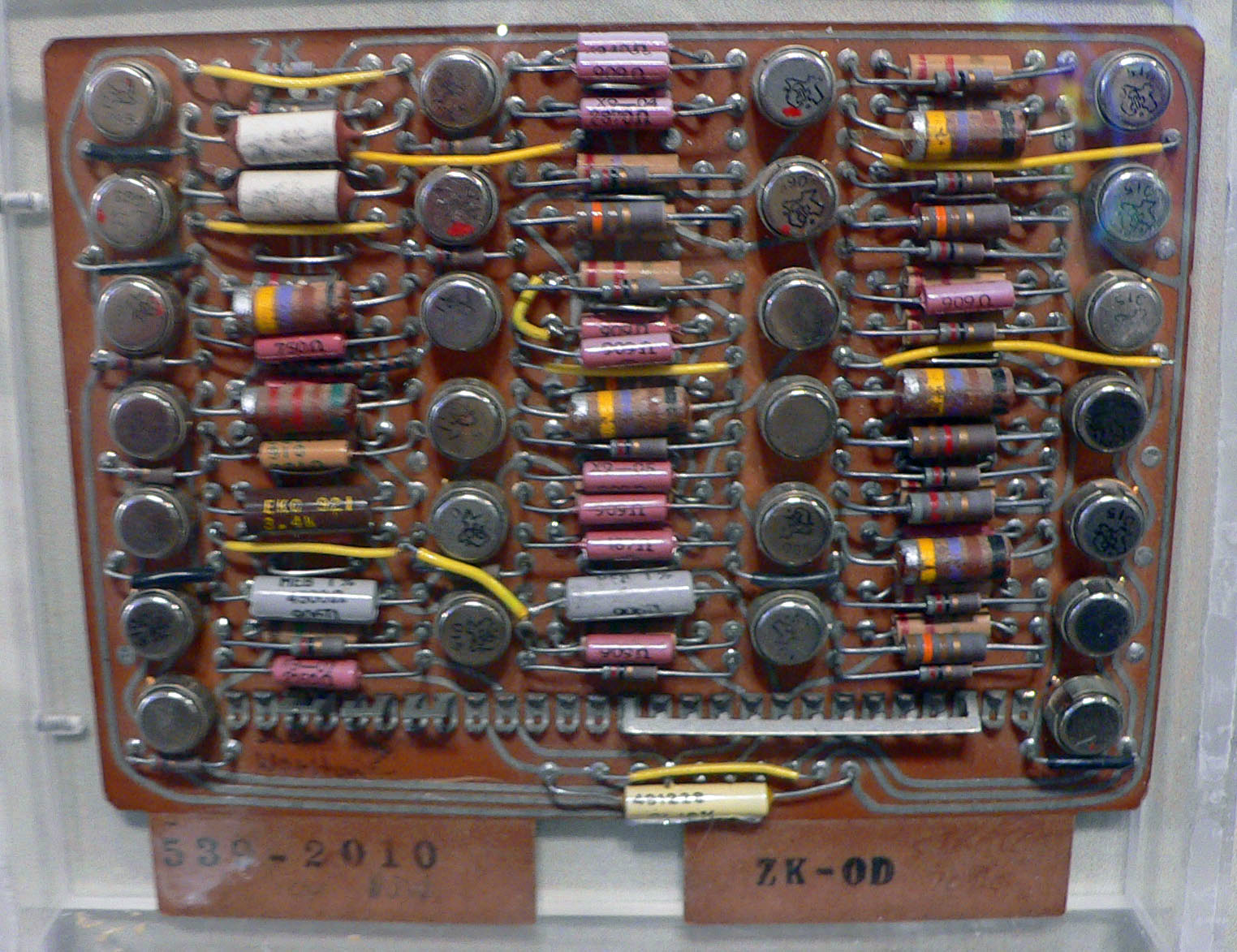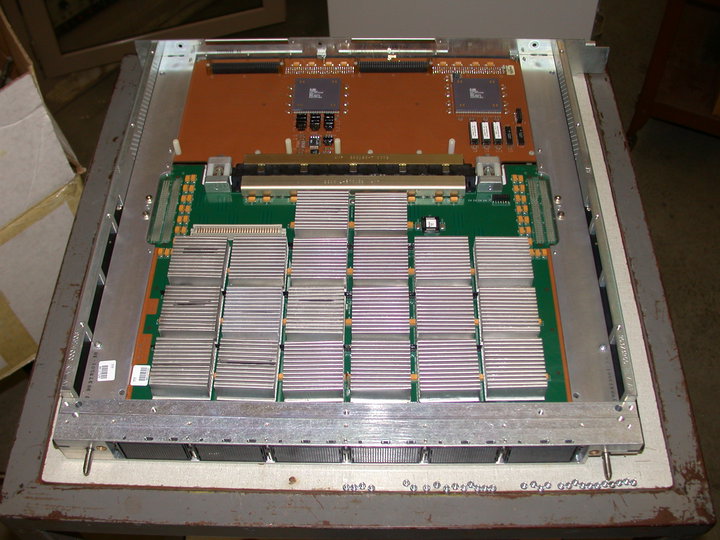|
Cray-2
The Cray-2 is a supercomputer with four vector processors made by Cray Research starting in 1985. At 1.9 GFLOPS peak performance, it was the fastest machine in the world when it was released, replacing the Cray X-MP in that spot. It was, in turn, replaced in that spot by the Cray Y-MP in 1988. The Cray-2 was the first of Seymour Cray's designs to successfully use multiple CPUs. This had been attempted in the CDC 8600 in the early 1970s, but the emitter-coupled logic (ECL) transistors of the era were too difficult to package into a working machine. The Cray-2 addressed this through the use of ECL integrated circuits, packing them in a novel 3D wiring that greatly increased circuit density. The dense packaging and resulting heat loads were a major problem for the Cray-2. This was solved in a unique fashion by forcing the electrically inert Fluorinert liquid through the circuitry under pressure and then cooling it outside the processor box. The unique "waterfall" cooler syste ... [...More Info...] [...Related Items...] OR: [Wikipedia] [Google] [Baidu] |
Cray-3
The Cray-3 was a vector supercomputer, Seymour Cray's designated successor to the Cray-2. The system was one of the first major applications of gallium arsenide (GaAs) semiconductors in computing, using hundreds of custom built ICs packed into a CPU. The design goal was performance around 16 GFLOPS, about 12 times that of the Cray-2. Work started on the Cray-3 in 1988 at Cray Research's (CRI) development labs in Chippewa Falls, Wisconsin. Other teams at the lab were working on designs with similar performance. To focus the teams, the Cray-3 effort was moved to a new lab in Colorado Springs, Colorado later that year. Shortly thereafter, the corporate headquarters in Minneapolis decided to end work on the Cray-3 in favor of another design, the Cray C90. In 1989 the Cray-3 effort was spun off to a newly formed company, Cray Computer Corporation (CCC). The launch customer, Lawrence Livermore National Laboratory, cancelled their order in 1991 and a number of company executiv ... [...More Info...] [...Related Items...] OR: [Wikipedia] [Google] [Baidu] |
Seymour Cray
Seymour Roger Cray (September 28, 1925 – October 5, 1996 ) was an American and architect who designed a series of computers that were the fastest in the world for decades, and founded which built many of these machines. Called "the father of supercomputing", Cray has been credited with creating the supercomputer industry. [...More Info...] [...Related Items...] OR: [Wikipedia] [Google] [Baidu] |
Cray Research
Cray Inc., a subsidiary of Hewlett Packard Enterprise, is an American supercomputer manufacturer headquartered in Seattle, Washington. It also manufactures systems for data storage and analytics. Several Cray supercomputer systems are listed in the TOP500, which ranks the most powerful supercomputers in the world. Cray manufactures its products in part in Chippewa Falls, Wisconsin, where its founder, Seymour Cray, was born and raised. The company also has offices in Bloomington, Minnesota (which have been converted to Hewlett Packard Enterprise offices), and numerous other sales, service, engineering, and R&D locations around the world. The company's predecessor, Cray Research, Inc. (CRI), was founded in 1972 by computer designer Seymour Cray. Seymour Cray later formed Cray Computer Corporation (CCC) in 1989, which went bankrupt in 1995. Cray Research was acquired by Silicon Graphics (SGI) in 1996. Cray Inc. was formed in 2000 when Tera Computer Company purchased the Cr ... [...More Info...] [...Related Items...] OR: [Wikipedia] [Google] [Baidu] |
Cray2
Cray Inc., a subsidiary of Hewlett Packard Enterprise, is an American supercomputer manufacturer headquartered in Seattle, Washington. It also manufactures systems for data storage and analytics. Several Cray supercomputer systems are listed in the TOP500, which ranks the most powerful supercomputers in the world. Cray manufactures its products in part in Chippewa Falls, Wisconsin, where its founder, Seymour Cray, was born and raised. The company also has offices in Bloomington, Minnesota (which have been converted to Hewlett Packard Enterprise offices), and numerous other sales, service, engineering, and R&D locations around the world. The company's predecessor, Cray Research, Inc. (CRI), was founded in 1972 by computer designer Seymour Cray. Seymour Cray later formed Cray Computer Corporation (CCC) in 1989, which went bankrupt in 1995. Cray Research was acquired by Silicon Graphics (SGI) in 1996. Cray Inc. was formed in 2000 when Tera Computer Company purchased the Cray Rese ... [...More Info...] [...Related Items...] OR: [Wikipedia] [Google] [Baidu] |
CDC 8600
The CDC 8600 was the last of Seymour Cray's supercomputer designs while he worked for Control Data Corporation. As the natural successor to the CDC 6600 and CDC 7600, the 8600 was intended to be about 10 times as fast as the 7600, already the fastest computer on the market. The design was essentially four 7600's, packed into a very small chassis so they could run at higher clock speeds. Development started in 1968, shortly after the release of the 7600, but the project soon started to bog down. The dense packaging of the system led to serious reliability problems and difficulty cooling the individual components. By 1971, CDC was having cash-flow problems and the design was still not coming together, prompting Cray to leave the company in 1972. The 8600 design effort was eventually canceled in 1974, and Control Data moved on to the CDC STAR-100 series instead. Cray revisited the 8600's basic design in his Cray-2 of the early 1980s. The introduction of integrated circuits solv ... [...More Info...] [...Related Items...] OR: [Wikipedia] [Google] [Baidu] |
Cray-1
The Cray-1 was a supercomputer designed, manufactured and marketed by Cray Research. Announced in 1975, the first Cray-1 system was installed at Los Alamos National Laboratory in 1976. Eventually, over 100 Cray-1s were sold, making it one of the most successful supercomputers in history. It is perhaps best known for its unique shape, a relatively small C-shaped cabinet with a ring of benches around the outside covering the power supplies and the cooling system. The Cray-1 was the first supercomputer to successfully implement the vector processor design. These systems improve the performance of math operations by arranging memory and registers to quickly perform a single operation on a large set of data. Previous systems like the CDC STAR-100 and ASC had implemented these concepts but did so in a way that seriously limited their performance. The Cray-1 addressed these problems and produced a machine that ran several times faster than any similar design. The Cray-1's architect w ... [...More Info...] [...Related Items...] OR: [Wikipedia] [Google] [Baidu] |
Supercomputer
A supercomputer is a computer with a high level of performance as compared to a general-purpose computer. The performance of a supercomputer is commonly measured in floating-point operations per second (FLOPS) instead of million instructions per second (MIPS). Since 2017, there have existed supercomputers which can perform over 1017 FLOPS (a hundred quadrillion FLOPS, 100 petaFLOPS or 100 PFLOPS). For comparison, a desktop computer has performance in the range of hundreds of gigaFLOPS (1011) to tens of teraFLOPS (1013). Since November 2017, all of the world's fastest 500 supercomputers run on Linux-based operating systems. Additional research is being conducted in the United States, the European Union, Taiwan, Japan, and China to build faster, more powerful and technologically superior exascale supercomputers. Supercomputers play an important role in the field of computational science, and are used for a wide range of computationally intensive tasks in v ... [...More Info...] [...Related Items...] OR: [Wikipedia] [Google] [Baidu] |
Cray X-MP
The Cray X-MP was a supercomputer designed, built and sold by Cray Research. It was announced in 1982 as the "cleaned up" successor to the 1975 Cray-1, and was the world's fastest computer from 1983 to 1985 with a quad-processor system performance of 800 MFLOPS. The principal designer was Steve Chen. Description The X-MP's main improvement over the Cray-1 was that it was a shared-memory parallel vector processor, the first such computer from Cray Research. It housed up to four CPUs in a mainframe that was nearly identical in outside appearance to the Cray-1. The X-MP CPU had a faster 9.5 nanosecond clock cycle (105 MHz), compared to 12.5 ns for the Cray-1A. It was built from bipolar gate-array integrated circuits containing 16 emitter-coupled logic gates each. The CPU was very similar to the Cray-1 CPU in architecture, but had better memory bandwidth (with two read ports and one write port to the main memory instead of only one read/write port) and improved chai ... [...More Info...] [...Related Items...] OR: [Wikipedia] [Google] [Baidu] |
Supercomputer
A supercomputer is a computer with a high level of performance as compared to a general-purpose computer. The performance of a supercomputer is commonly measured in floating-point operations per second (FLOPS) instead of million instructions per second (MIPS). Since 2017, there have existed supercomputers which can perform over 1017 FLOPS (a hundred quadrillion FLOPS, 100 petaFLOPS or 100 PFLOPS). For comparison, a desktop computer has performance in the range of hundreds of gigaFLOPS (1011) to tens of teraFLOPS (1013). Since November 2017, all of the world's fastest 500 supercomputers run on Linux-based operating systems. Additional research is being conducted in the United States, the European Union, Taiwan, Japan, and China to build faster, more powerful and technologically superior exascale supercomputers. Supercomputers play an important role in the field of computational science, and are used for a wide range of computationally intensive tasks in v ... [...More Info...] [...Related Items...] OR: [Wikipedia] [Google] [Baidu] |
Vector Processor
In computing, a vector processor or array processor is a central processing unit (CPU) that implements an instruction set where its instructions are designed to operate efficiently and effectively on large one-dimensional arrays of data called ''vectors''. This is in contrast to scalar processors, whose instructions operate on single data items only, and in contrast to some of those same scalar processors having additional single instruction, multiple data (SIMD) or SWAR Arithmetic Units. Vector processors can greatly improve performance on certain workloads, notably numerical simulation and similar tasks. Vector processing techniques also operate in video-game console hardware and in graphics accelerators. Vector machines appeared in the early 1970s and dominated supercomputer design through the 1970s into the 1990s, notably the various Cray platforms. The rapid fall in the price-to-performance ratio of conventional microprocessor designs led to a decline in vector sup ... [...More Info...] [...Related Items...] OR: [Wikipedia] [Google] [Baidu] |
Fluorinert
Fluorinert is the trademarked brand name for the line of electronics coolant liquids sold commercially by 3M. As perfluorinated compounds (PFCs), all Fluorinert variants have an extremely high Global Warming Potential (GWP), so should be used with caution (see below). It is an electrically insulating, stable fluorocarbon-based fluid, which is used in various cooling applications. It is mainly used for cooling electronics. Different molecular formulations are available with a variety of boiling points, allowing it to be used in "single-phase" applications, where it remains a liquid, or for "two-phase" applications, where the liquid boils to remove additional heat by evaporative cooling. An example of one of the compounds 3M uses is FC-72 (perfluorohexane, C6F14). Perfluorohexane is used for low-temperature heat-transfer applications due to its boiling point. Another example is FC-75, perfluoro(2-butyl-tetrahydrofurane). There are 3M fluids that can handle up to , such as FC-70 (pe ... [...More Info...] [...Related Items...] OR: [Wikipedia] [Google] [Baidu] |
Cray Y-MP
The Cray Y-MP was a supercomputer sold by Cray Research from 1988, and the successor to the company's X-MP. The Y-MP retained software compatibility with the X-MP, but extended the address registers from 24 to 32 bits. High-density VLSI ECL technology was used and a new liquid-cooling system was devised. The Y-MP ran the Cray UNICOS operating system. The Y-MP could be equipped with two, four or eight vector processors, with two functional units each and a clock cycle time of 6 ns (167 MHz). Peak performance was thus 333 megaflops per processor. Main memory comprised 128, 256 or 512 MB of SRAM. The original Y-MP (otherwise known as the Y-MP Model D) was housed in a chassis similar to the horseshoe-shaped X-MP, but with an extra rectangular cabinet added in the middle (containing the CPU boards), thus forming a "Y" shape in plan view. The system could be configured with one or two ''Model D'' IOSs (Input/Output Subsystems) and an optional Solid State Disk (SSD) of 256 M ... [...More Info...] [...Related Items...] OR: [Wikipedia] [Google] [Baidu] |










